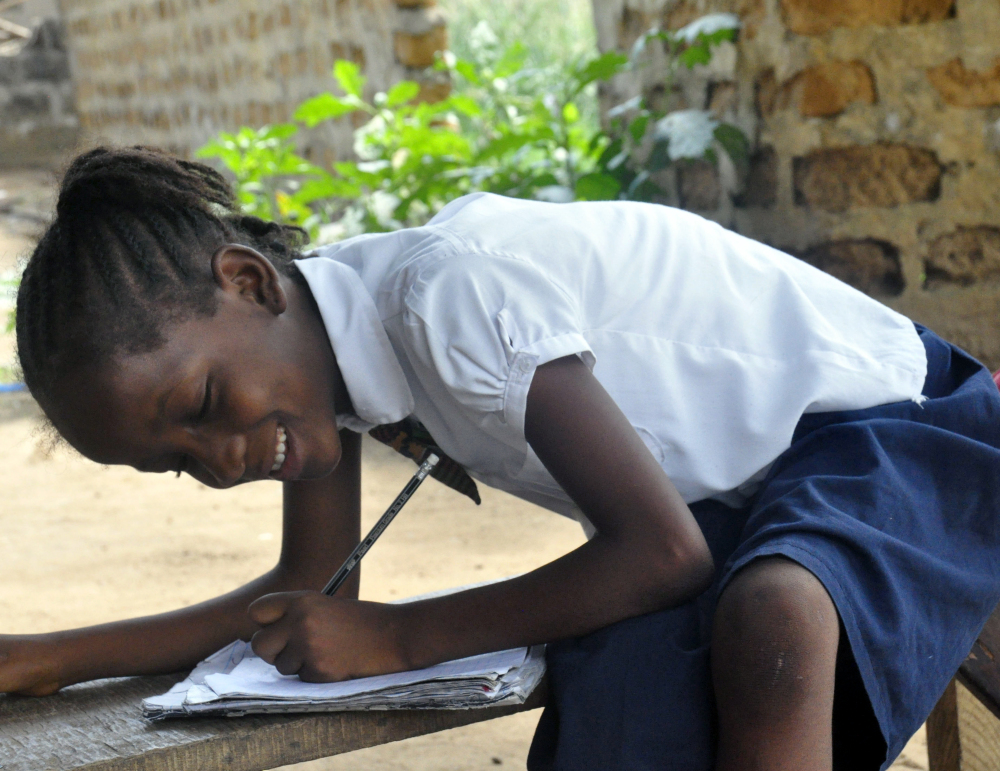MONROVIA, Liberia — On the day Mercy Kennedy lost her mother to Ebola, it was hard to imagine a time when Liberia would be free from one of the world’s deadliest viruses. It had swept through the 9-year-old’s neighborhood, killing people house by house.
Neighbors were so fearful that Mercy, too, might be sick that no one would touch her to comfort her as tears streamed down her face. She had only a tree to lean on as she wept.
Now seven months later, Liberia on Saturday officially marked the end of the epidemic that claimed more than 4,700 lives here, and Mercy is thriving in the care of a family friend not far from where she used to live.
“What we went through here was terrifying,” said Martu Weefor, 39, who is now raising Mercy alongside her three biological children and Mercy’s brother. “Nobody wanted to pass on our road or have anything to do with us, everybody was afraid of the community. I thank God that Liberia is free from Ebola.”
Saturday marks 42 days since Liberia’s last Ebola case – the benchmark used to declare the outbreak over because it represents two incubation periods of 21 days for new cases to emerge. The World Health Organization on Saturday called the milestone a “monumental achievement for a country that reported the highest number of deaths in the largest, longest and most complex outbreak since Ebola first emerged in 1976.”
The statistics of loss, though, are enormous in Liberia: 189 health workers dead. Some 3,290 children lost one or both parents to the disease, though most have been placed with other relatives or in foster care.
ONGOING HEALING PROCESS
While praising the international community’s help in getting Liberia to zero cases, Liberian President Ellen Johnson Sirleaf on Saturday criticized the slow initial response to the epidemic in West Africa that cost many lives.
“This Ebola outbreak is a scar on the conscience of the world. For some the pain and grief will take a generation to heal,” she said. “Therefore, let today’s announcement be a call to arms that we will build a better world for those Ebola could not reach … It is the least the memories of our dearly departed deserve.”
Elsewhere in West Africa, new cases were still being reported this week in both Sierra Leone and in Guinea, where five of the new victims were only diagnosed after death. The fact they had never even sought treatment for Ebola means health officials lost critical time to track their relatives and other contacts.
“It’s important to remember the next case is only a canoe ride away across the river or across a forest path, so we still have an element of risk here and we all need to be very conscious of that,” said Sheldon Yett, UNICEF’s Representative in Liberia, who emphasized that the recovery needs also remain enormous.
At the height of the crisis back in August and September, Saturday’s milestone seemed far from reach. Liberia had between 300 and 400 new cases every week. People pushed victims in wheelbarrows down the streets of Monrovia, with only plastic bags to protect their sandaled feet from possible exposure to Ebola. Scores of people too sick to stand waited outside Ebola treatment centers with the hope that enough people had died overnight so there would be beds for them.
URBAN AREAS HIT HARD
The disastrous epidemic in Monrovia and the capitals of Guinea and Sierra Leone marked the first time the Ebola virus had infiltrated major urban areas where it could spread quickly through densely populated, impoverished neighborhoods. The outbreak caused its first deaths in December 2013 but only made headlines in March 2014 in Guinea before soon spreading to Liberia and Sierra Leone.
Worldwide panic heightened in late September when a man from Liberia tested positive for Ebola in the United States while visiting relatives in Texas. The disease also broke out in Senegal, Mali and Nigeria where officials managed to quickly isolate and quash their Ebola cases but the virus became entrenched particularly in Liberia’s capital. Ultimately, social mobilization helped turn the tide.
“Communities here did the right thing: They isolated people who were sick, they reported people who were sick. Every street corner had stations for washing hands, and this made a difference,” Yett said.
Many of the treatment centers built with help from the U.S. finished construction after the height of the epidemic – some of the tarp and wood constructed facilities will be repurposed but many will be taken down. Communities scarred by the looming threat of death can’t imagine visiting them even months later, even if the clinics never treated a single Ebola case, experts say.
“Even today (when) we hear an ambulance siren, we have to shake a little bit, seeing if this normal or are we facing something again,” Liberia’s president said recently at an event marking the end of a U.S.-built Ebola treatment center for exposed health workers.
There are also concerns about the long-term effects on survivors, including questions about how long the virus remains in the body. On Friday, WHO updated advice and testing guidelines for male survivors of Ebola because of the “strong possibility” that the virus could be spread through sex months later.
Send questions/comments to the editors.



Success. Please wait for the page to reload. If the page does not reload within 5 seconds, please refresh the page.
Enter your email and password to access comments.
Hi, to comment on stories you must . This profile is in addition to your subscription and website login.
Already have a commenting profile? .
Invalid username/password.
Please check your email to confirm and complete your registration.
Only subscribers are eligible to post comments. Please subscribe or login first for digital access. Here’s why.
Use the form below to reset your password. When you've submitted your account email, we will send an email with a reset code.